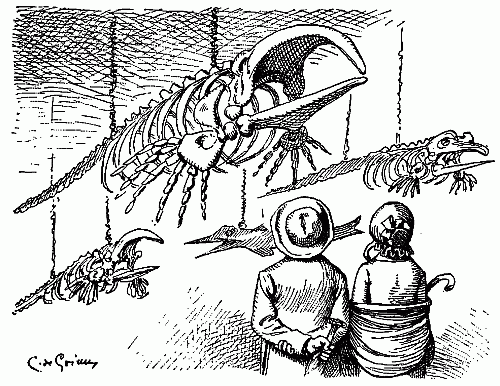
Adults in museums behave very differently to children. They learn differently too. Image Credit: public-domain.zorger.com
This past weekend I worked as an interpreter for a late night, adult event at THEMUSEUM. I like working with kids in museums, but I enjoy engaging adults too. However, there are distinct differences between teaching grown-ups and kids. Researchers have articulated adult teaching as ‘andragogy’, different to ‘pedagogy’ that is teaching children.
An educator and researcher named Malcolm Knowles coined ‘andragogy’ to refer to the art and science of helping adults learn. There are some unique characteristics of adults learners that make them different to child learners, like:
- Adult learners are autonomous and self-directed
- Adult learners have accumulated a foundation of diverse life experiences and knowledge
That ‘self-direction’ and autonomy can make it challenging to broach the initial engagement with adult museum visitors. I struggled with that a few weeks ago when I was a docent for a wedding reception. The guests were great, but they seemed content to look at things quietly as self-contained couples, and I felt reluctant to ‘disturb’ them.
But making connections with a visitor’s prior knowledge and experience is an excellent way to engage them in a museum setting and teach them new information. Adults learn best when new knowledge is demonstrably linked with their prior experiences.
At this weekend’s event, I was a docent for the Light Illuminated Exhibit, which had a station focused on the polarization of light.When adults hear polarization, they often think of sunglasses, and that’s an excellent starting point. The exhibit has some framed polarizers, and I got the adults to play with the frame’s orientation to reduce glare coming off of a glossy sign and the glare coming off a tank of water. It helped them make the connection between orientation of the polarizer and the orientation of the wave that it blocked out. They were delighted by the demonstration and for finally having an explanation for how polarized sunglasses work. When I talk to children about polarization, I start with the exhibits activities and try to link it to their own experiences afterwards, but usually most kids I talk to don’t know what polarized sunglasses are.

The orientation of a light wave is called polarization. In the image, the blue waves go up and down, the red ones go side to side. You can filter out some kinds of light depending on the direction of its polarization. Image Credit: Wjh31 (Own work) [Public domain], via Wikimedia Commons
Sunglass polarization is one option for linking new knowledge to prior experience. But with adults, your options are almost endless. I had business types with no knowledge of how light worked and I had one person who described the way that he challenged his physics professor in lecture. Some people gravitate to particular objects, delighted by the fact that they recognize them and others told me things I hadn’t known before and now that information is incorporated into my schpiel.
It’s not that children don’t have different life experiences, but the difference between a ten-year-old and a thirty-year-old is vast and varied. It means that I have more entry points to engage adults with facts whereas I am often starting from complete scratch with kids.
How do you teach different age groups? How do you modify your approach between audience-types? Post your thoughts in the comments section below.
Cheers,

Additional Resources:
Harris, S. (2003). An andragogical model: Learning through life experiences.Kappa Delta Pi Record, 40(1), 38-41.
Pearson, D., Barriault, C. L., & Cochrane, L. (2010). A view from the exhibit floor… Science story telling. Hypothesis, 8(1).

No Comments